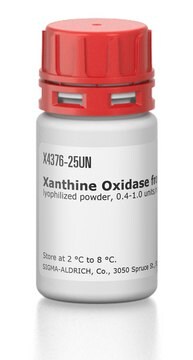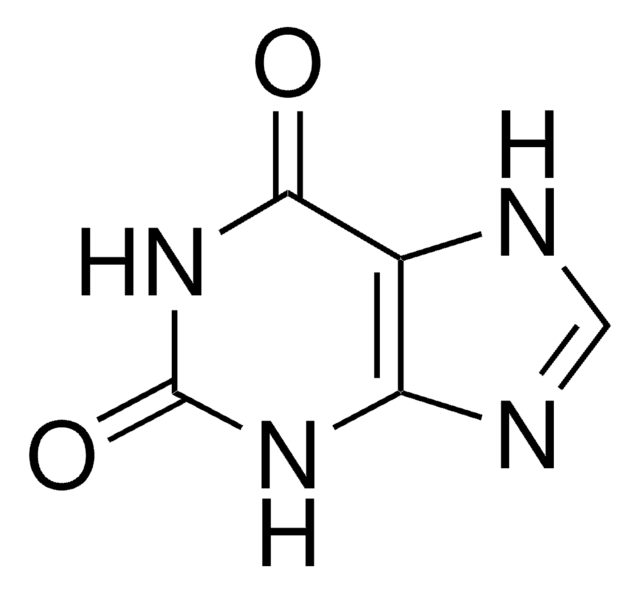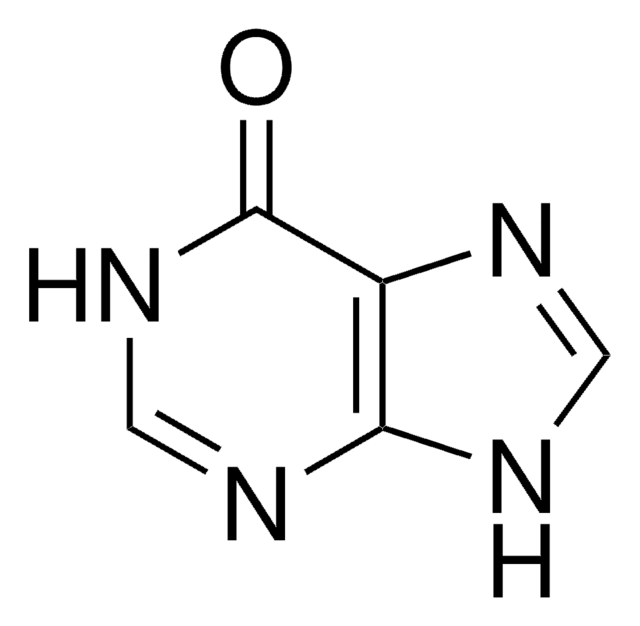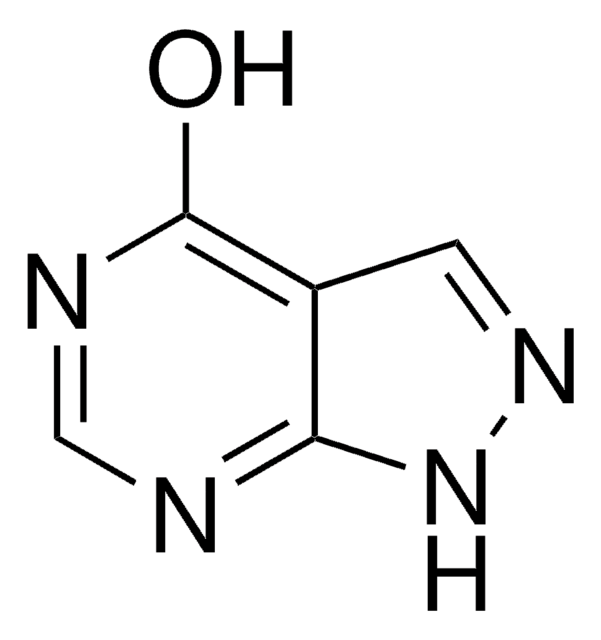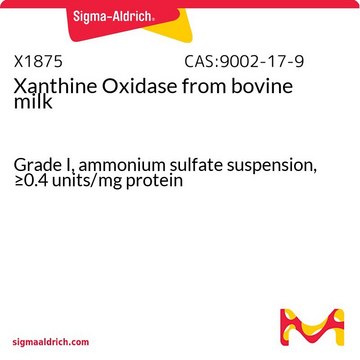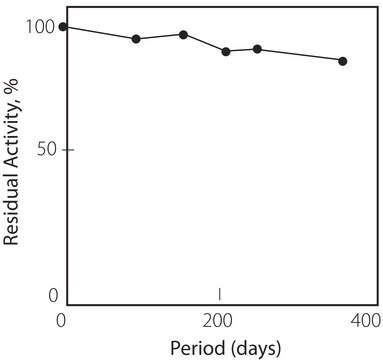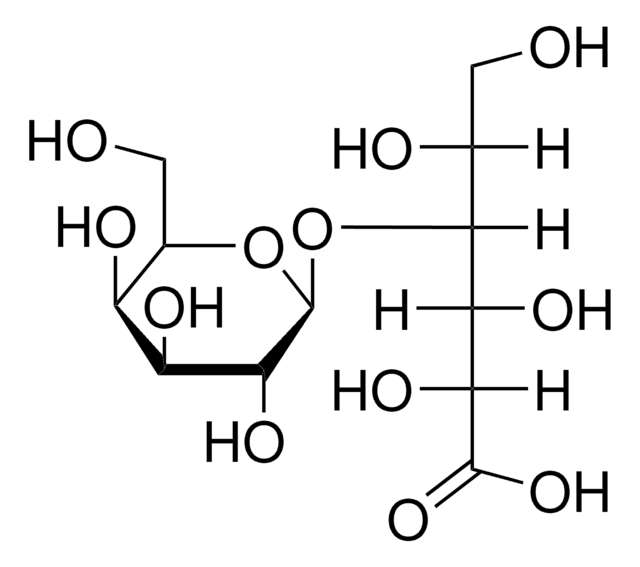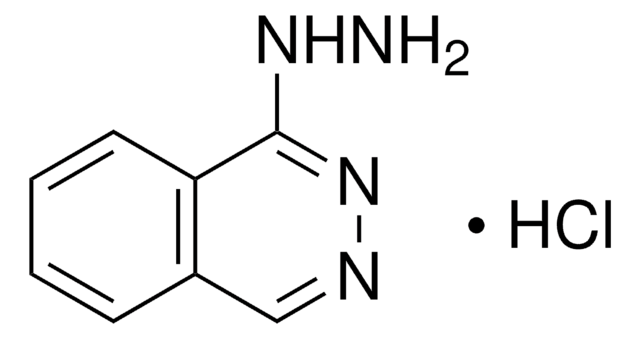A8003
Allopurinol
xanthine oxidase inhibitor
Synonym(s):
1H-Pyrazolo(3,4-d)pyrimidin-4-ol, 4-Hydroxypyrazolo(3,4-d)pyrimidine, 4-Hydroxypyrazolo[3,4-d]pyrimidine, HPP
About This Item
Recommended Products
biological source
synthetic (organic)
Quality Level
Assay
≥99% (TLC)
form
powder
mp
>300 °C (lit.)
solubility
1 M NaOH: soluble 50 mg/mL, clear to very slightly hazy, colorless to faintly yellow
storage temp.
room temp
SMILES string
O=C1NC=Nc2[nH]ncc12
InChI
1S/C5H4N4O/c10-5-3-1-8-9-4(3)6-2-7-5/h1-2H,(H2,6,7,8,9,10)
InChI key
OFCNXPDARWKPPY-UHFFFAOYSA-N
Gene Information
human ... XDH(7498)
Looking for similar products? Visit Product Comparison Guide
Application
- to decrease the uric acid levels and study its effect on renal injury and inflammation in mice
- as a xanthine oxidase inhibitor to test panton-valentine leukocidin (PVL) neutrophil extracellular traps (NETosis) dependence on different enzymes, channels, or organelles using human polymorphonuclear cells (hPMNs)
- as a reference standard to study the inhibitory effect of olive leaf components on xanthine oxidase in vitro
- intravenous injection in mice for inhibition of xanthine oxidase
- use as an inhibitor of xanthine oxidase
- use as a positive control in xanthine oxidase inhibition assay
- use in the preparation of University of Wisconsin solution for osmotic stabilization to enhance the density differences between islets and acinar fragments during porcine islet purification
Biochem/physiol Actions
Signal Word
Danger
Hazard Statements
Precautionary Statements
Hazard Classifications
Acute Tox. 3 Oral - Skin Sens. 1
Storage Class Code
6.1C - Combustible acute toxic Cat.3 / toxic compounds or compounds which causing chronic effects
WGK
WGK 2
Flash Point(F)
Not applicable
Flash Point(C)
Not applicable
Personal Protective Equipment
Choose from one of the most recent versions:
Already Own This Product?
Find documentation for the products that you have recently purchased in the Document Library.
Customers Also Viewed
Our team of scientists has experience in all areas of research including Life Science, Material Science, Chemical Synthesis, Chromatography, Analytical and many others.
Contact Technical Service